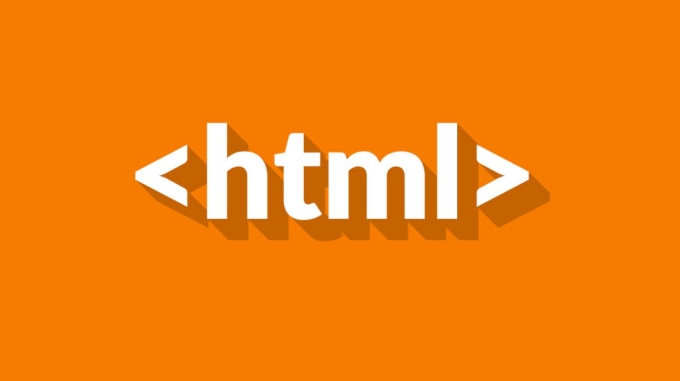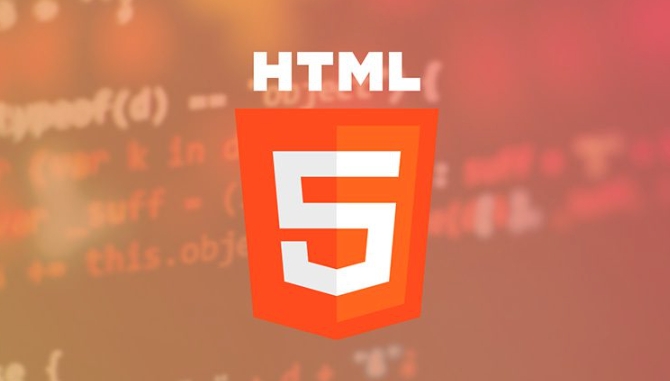Key Differences and Use Cases for HTML class and id Attributes
Jul 14, 2025 am 02:37 AMId is used to uniquely identify elements, such as navigation bar, footer; class is used to reusable styles, such as buttons, and status switching. 1. The id must be unique, suitable for anchor positioning and JavaScript precise operation; 2. Class can be used for multiple elements, supports multiple selection and combination, and is suitable for component design; 3. The priority of id in CSS is higher than class; 4. Use id for layout, and class for interactive logic; 5. The naming should be clear and semantic to avoid abuse or vague description.

In web development, class and id are two of the most commonly used attributes in HTML, used to add identifiers to elements, making it convenient for CSS style control and JavaScript operations. They look a lot like it, but have different uses and rules. Simply put: an id represents a unique identifier, and a class can be reused .

When to use id?
The biggest feature of id is "uniqueness" - there cannot be two identical ids in the page. This makes it ideal for identifying structures or components unique to the page.

Common usage scenarios include:
- Global elements such as page main title, navigation bar, footer, etc.
- Positions that need to be positioned through anchor jump (for example
<a href="#section1"></a>) - A specific element in JavaScript that needs to be operated accurately
For example:

<div id="main-header">This is the main title of the website</div>
A few points to note:
- The id name must be unique
- Naming suggestions are clear and semantic, such as
#sidebarand#user-profile - Don't abuse id to write styles because reusability is poor
When to use class?
The advantage of class lies in its "reusability". The same class can be applied to multiple elements, which is the key to style reuse and component design.
Suitable occasions include:
- Multiple elements share the same style (such as buttons, cards)
- Elements that need to switch styles according to state (such as
.active,.hidden) - In componentized front-end frameworks (such as React, Vue)
For example:
<button class="btn">Submit</button> <button class="btn">Cancel</button>
Some tips:
- class can have multiple, separated by spaces, for example
<div class="card featured"> <li> Class names are recommended to be concise and clear, avoiding excessively long or vague naming</li> <li> Using naming specifications such as BEM can help maintain large projects</li> <hr> <h3 id="The-difference-between-id-and-class-in-CSS-and-JS"> The difference between id and class in CSS and JS</h3> <p> Functionally, both can be accessed by CSS and JavaScript, but there are differences in usage and priority.</p> <p> CSS Level:</p> <ul> <li> The id selector has a higher priority than class (which means that the id style is more likely to take effect if it conflicts)</li> <li> class supports multiple selection and can be used in combination, while id can only have one</li> </ul> <p> JavaScript Level:</p> <ul> <li> Get the id element with <code>document.getElementById('xxx') - Get the class element with
document.getElementsByClassName()ordocument.querySelectorAll('.xxx') - id is more suitable for direct positioning of a single element, class is more suitable for batch processing
Recommendations for use in actual development
How to choose id and class when actually writing code? Here are a few practical suggestions:
Use id for layout structure, and use class for style components
For example, the page container can be used with#container, but the buttons are uniformly used with.btnAvoid overuse of id writing styles
Because the id has high priority, it can easily lead to style coverage problems and debugging is troublesomeDynamic interaction logic prioritizes class
For example, toggle menu expand and close, useclassList.toggle()to operate class more flexibleKeep semantics clear and naming meaningful
Do not use class names that describe styles such as.redor.big, but should use semantic names such as.error-messageor.highlight
Basically that's it. class and id have their own bits. Only by understanding their differences can you write clearer and easier to maintain HTML structure and style logic.
The above is the detailed content of Key Differences and Use Cases for HTML class and id Attributes. For more information, please follow other related articles on the PHP Chinese website!

Hot AI Tools

Undress AI Tool
Undress images for free

Undresser.AI Undress
AI-powered app for creating realistic nude photos

AI Clothes Remover
Online AI tool for removing clothes from photos.

Clothoff.io
AI clothes remover

Video Face Swap
Swap faces in any video effortlessly with our completely free AI face swap tool!

Hot Article

Hot Tools

Notepad++7.3.1
Easy-to-use and free code editor

SublimeText3 Chinese version
Chinese version, very easy to use

Zend Studio 13.0.1
Powerful PHP integrated development environment

Dreamweaver CS6
Visual web development tools

SublimeText3 Mac version
God-level code editing software (SublimeText3)

Hot Topics
 How do I minimize the size of HTML files?
Jun 24, 2025 am 12:53 AM
How do I minimize the size of HTML files?
Jun 24, 2025 am 12:53 AM
To reduce the size of HTML files, you need to clean up redundant code, compress content, and optimize structure. 1. Delete unused tags, comments and extra blanks to reduce volume; 2. Move inline CSS and JavaScript to external files and merge multiple scripts or style blocks; 3. Simplify label syntax without affecting parsing, such as omitting optional closed tags or using short attributes; 4. After cleaning, enable server-side compression technologies such as Gzip or Brotli to further reduce the transmission volume. These steps can significantly improve page loading performance without sacrificing functionality.
 How has HTML evolved over time, and what are the key milestones in its history?
Jun 24, 2025 am 12:54 AM
How has HTML evolved over time, and what are the key milestones in its history?
Jun 24, 2025 am 12:54 AM
HTMLhasevolvedsignificantlysinceitscreationtomeetthegrowingdemandsofwebdevelopersandusers.Initiallyasimplemarkuplanguageforsharingdocuments,ithasundergonemajorupdates,includingHTML2.0,whichintroducedforms;HTML3.x,whichaddedvisualenhancementsandlayout
 How do I use the element to represent the footer of a document or section?
Jun 25, 2025 am 12:57 AM
How do I use the element to represent the footer of a document or section?
Jun 25, 2025 am 12:57 AM
It is a semantic tag used in HTML5 to define the bottom of the page or content block, usually including copyright information, contact information or navigation links; it can be placed at the bottom of the page or nested in, etc. tags as the end of the block; when using it, you should pay attention to avoid repeated abuse and irrelevant content.
 How do I use the tabindex attribute to control the tab order of elements?
Jun 24, 2025 am 12:56 AM
How do I use the tabindex attribute to control the tab order of elements?
Jun 24, 2025 am 12:56 AM
ThetabindexattributecontrolshowelementsreceivefocusviatheTabkey,withthreemainvalues:tabindex="0"addsanelementtothenaturaltaborder,tabindex="-1"allowsprogrammaticfocusonly,andtabindex="n"(positivenumber)setsacustomtabbing
 What is the declaration, and what does it do?
Jun 24, 2025 am 12:57 AM
What is the declaration, and what does it do?
Jun 24, 2025 am 12:57 AM
Adeclarationisaformalstatementthatsomethingistrue,official,orrequired,usedtoclearlydefineorannounceanintent,fact,orrule.Itplaysakeyroleinprogrammingbydefiningvariablesandfunctions,inlegalcontextsbyreportingfactsunderoath,andindailylifebymakingintenti
 How do I use the and elements to provide a caption for an image?
Jun 24, 2025 am 12:45 AM
How do I use the and elements to provide a caption for an image?
Jun 24, 2025 am 12:45 AM
The standard way to add titles to images in HTML is to use and elements. 1. The basic usage is to wrap the image in the tag and add a title inside it, for example: this is the title of the image; 2. The reasons for using these two tags include clear semantics, convenient style control, and strong accessibility, which helps the browser, crawler and screen readers to understand the content structure; 3. Notes include that it can be placed up and down but needs to maintain logical order, cannot replace the alt attribute, and can contain multiple media elements to form a whole unit.
 What is the loading='lazy' one of the html attributes and how does it improve page performance?
Jul 01, 2025 am 01:33 AM
What is the loading='lazy' one of the html attributes and how does it improve page performance?
Jul 01, 2025 am 01:33 AM
loading="lazy" is an HTML attribute for and which enables the browser's native lazy loading function to improve page performance. 1. It delays loading non-first-screen resources, reduces initial loading time, saves bandwidth and server requests; 2. It is suitable for large amounts of pictures or embedded content in long pages; 3. It is not suitable for first-screen images, small icons, or lazy loading using JavaScript; 4. It is necessary to cooperate with optimization measures such as setting sizes and compressing files to avoid layout offsets and ensure compatibility. When using it, you should test the scrolling experience and weigh the user experience.
 How do I use the element to represent a section of navigation links?
Jun 24, 2025 am 12:55 AM
How do I use the element to represent a section of navigation links?
Jun 24, 2025 am 12:55 AM
The key to using elements to represent navigation link areas is semantics and clear structure, usually in conjunction with organizational links. 1. The basic structure is to put the parallel links in and wrap them inside, which is friendly to auxiliary tools and is conducive to style control and SEO; 2. Commonly used in or, for placing main navigation or footer link collections; 3. A page can contain multiple areas, such as main menu, sidebar or footer independent navigation.






